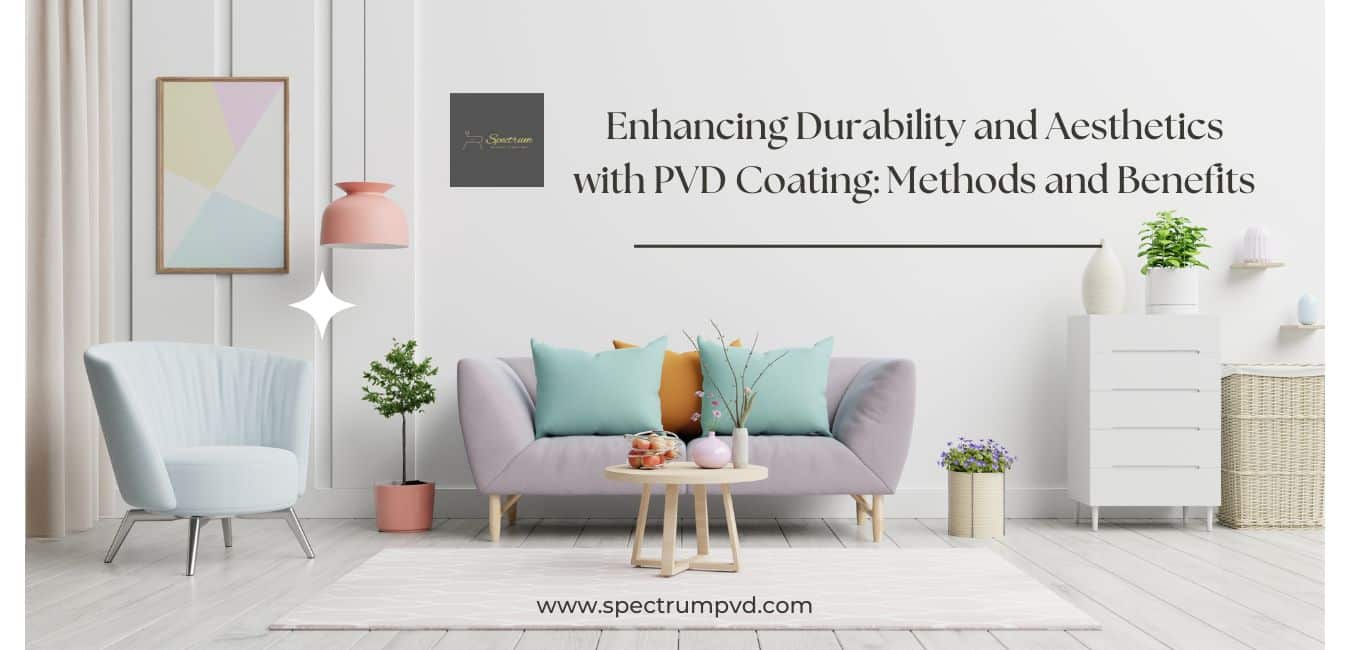How can you boost the performance of your home decor with PVD coating? Now seeking increasingly ecologically friendly solutions in the constantly changing field of surface treatments, PVD coating techniques are progressively taking the stage. This post discusses PVD; its most often used industrial applications, its application methods, and its benefits in terms of manufacturing and sustainability.
In several areas, such as cosmetic packaging, where part of a product’s value rests in its box, functionality and aesthetics are important in the surface treatment business. Now, more and more frequently ecologically friendly, functionality and aesthetics rely not only on design decisions but also on the materials and techniques used.
PVD is already extensively used in many sectors, including cosmetic and food packaging, beverage, design and ornamental components, and funerary art, but also aluminum profiles for luxury furniture in Bangalore, 3D printed components, fashion accessories, and car parts – all needing to achieve different shades and effects with a wide range of colors. PVD is a more sustainable alternative to chrome plating. Furthermore, any later application of a high-strength organic topcoat ensures great PVD coating in Bangalore service endurance against external mechanical loads and atmospheric aging. Now, let us stand back and define PVD.
Why Would Your Furniture Need PVD Coating?
Investing in PVD coating in Bangalore for furniture is wise as it provides environmental benefits, durability, and corrosion resistance and looks improved in addition to functional ones. PVD coating is thus a desirable choice for customers wishing to prolong the life and beauty of their furniture like luxury sofas and producers.
Improved Tenacity
PVD coatings greatly raise the hardness and wear resistance of furniture surfaces. This increases furniture’s resistance to wear and tear, abrasions, and scratches, guaranteeing a longer lifetime.
Enhanced Resistance Against Corrosion
PVD coating in Bangalore provide a protective layer on metal surfaces to prevent corrosion and tarnishing. This is especially helpful for laser cut furniture kept in high-humidity environments or subjected to different climatic conditions.
Excellent Appearance & Finish
From glossy to matte and metallic to vivid, PVD coatings provide a wide spectrum of textures and tints. This enables more personalization and improves the furniture’s overall visual attractiveness, making it more sophisticated and elegant.
The PVD process is more environmentally benign than conventional electroplating or painting techniques. It typically takes less energy and generates less toxic by-products, reducing environmental impact.
Manageability of Maintenance
PVD coating furniture makes maintenance and cleaning simpler. Reducing the effort required to maintain the furniture looking perfect, the smooth, nonporous surface refers to fingerprints, smudges, and stains.
Enhanced Value
PVD coating’s improved performance, durability, and aesthetic appeal help raise furniture like luxury sofas real and perceived worth. This might be crucial for high-quality or designer items especially.
PVD Procedures
- Thermal Evaporations
Under the influence of a strong current, the material—solid or liquid—sublimates or evaporates in this process, thereby condensing on the substrate on which the film is produced.
- Sputtering
Among the most often used techniques in the sector is sputtering, also called cathodic vaporization. Since sputtering does not cause material to melt, it is among the most hygienic application techniques. Low process temperatures allow any material—including heat-sensitive materials—to be covered. Furthermore, creating multi-layer systems using a vacuum coating system is feasible by placing numerous cathodes in various materials.
- Cathode Arc Evaporation
An electrical discharge aimed at the material to be deposited under low-voltage, high-current conditions generates evaporation during the arc evaporation process, which results in highly ionized particle emission adhering to the substrate.
The arc’s extraordinarily high temperature allows any substance to be vaporized equally fast. However, the strong current intensity may make this approach difficult to control and lead to droplets, producing coating flaws.
- Electronic Cannon
A heated filament produces a strong electrical current that strikes the material to be vaporized using the electron cannon deposition method. Usually composed of graphite, this substance is housed in a crucible and inside a copper heat sink. The electron beam distorts its kinetic energy into the substance, heating and evaporating it.
- Deposition Of Pulsed Laser
Pulsed laser deposition (PLD) is when a high-intensity laser beam strikes the material to vaporize it and then attach it to the substratum.
Conclusion
As is usually the case in surface treatments, the automobile sector is pioneering the more general use of this technology, which may still be seen as a specialty approach. Thanks to PVD coating, not only important pieces for automobile interiors (a method previously well known) but also external components, including alloy wheels, where physical vapor deposition substitutes the application of a colored base coat.
Furthermore, PVD coating adaptability offers solutions to two big developments in the automobile industry: lightweight construction—which lightens all vehicle components—and electric mobility—which calls for a spectrum of colors reflecting electric power (greens and blues). PVD meets the increasing need of the sector for a broad spectrum of finishes and helps automobiles to be light as a thin coating accessible in a great variety of colors.
Direction: Get Here


